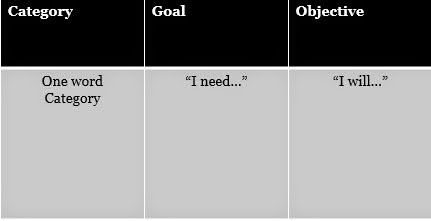 Several weeks ago, my acupuncturist Erin,
suggested that I begin a meditation practice as a way to quiet my mind. Throughout my life, I have had a consistently
active mind that tends to wander, whether I am getting a massage, trying to
fall asleep, or even receiving an acupuncture treatment. Erin handed me a copy of a blog post titled: How to Meditate: A 10 Step Beginner’s Guide
(March, 2011). This article provides to
the novice “student” of meditation, the basic building blocks with which to
begin a practice.
Several weeks ago, my acupuncturist Erin,
suggested that I begin a meditation practice as a way to quiet my mind. Throughout my life, I have had a consistently
active mind that tends to wander, whether I am getting a massage, trying to
fall asleep, or even receiving an acupuncture treatment. Erin handed me a copy of a blog post titled: How to Meditate: A 10 Step Beginner’s Guide
(March, 2011). This article provides to
the novice “student” of meditation, the basic building blocks with which to
begin a practice.
It has been 3 weeks since I started to
follow this advice and I have already noticed small changes. My quality of sleep has improved (not
necessarily the length), my mind does not wander as much when I am falling
asleep, and I now drift off during an acupuncture treatment or massage
session. Each heading in today’s post
comes from the beginner’s guide I mentioned.
However, I am going to describe to you how I meditate, which may be
slightly different from the blog. Click
on the link above to find the original instructions on meditation.
Sit
Tall
 |
| Chakra Stones on the body |
I have found that I am most comfortable
while lying down versus sitting tall. I
place pillows under my head and knees for comfort. Next, I place Chakra stones on the
corresponding areas of my body. Starting
at the Root, and working my way up to the Crown chakra. If it is cold, I cover myself with a blanket.
Relax
your body
As a way to relax my
body, I close my eyes and imagine that I am floating on top of the buoyant
Hawaiian Pacific Ocean. My muscles begin
to lose tension and relax, as I “float out to sea”.
Be
still and silent
I do not lie in perfect silence as I
listen to meditation music on my IPod.
It is at this point that I become mesmerized by the music, and begin to
feel the active energy of the stones that lie on top of my body. I take a mental note of which chakras are
most active during the session, but do not react or try to change what is
happening.
Breathe
Next, I begin to focus on
my breathing. As you may recall from
last week, I spoke about concentration meditation as the basis for all other
forms of meditation. The breath can be a
powerful tool to center your session. I
start by taking a deep breath in through my nose, exhale silently through my
mouth, and repeat this 5 times. Make
sure that the inhale/exhale cycles are equal in length.
Establish
a mantra
Mantras are sounds,
words, or utterances that can be repeated throughout your session. This is yet another way to bring focus to the
practice. Erin always leaves the
treatment room with these instructions (which has become my mantra) as my
acupuncture session begins: “Relax, breathe deeply, and go where the Spirit
takes you”.
Calm
your Mind
There are many days when
my mind is so active that it takes to the end of my meditation practice to
become focused on my mantra. In this situation, you need to acknowledge the
thoughts, set them aside, and return to the mantra. As I have progressed with my meditation, I
have noticed that the scattered thoughts are not as frequent. When I focus on the energy that is released
from the stones, my mind becomes steady and silent.
 |
| Kailua-Kona, Hawaii |
When
to end your practice
Because my mind can be so active, I could
not meditate for longer than 1 or 2 minutes.
After 3 weeks of steady practice, my session has lengthened to anywhere
between 20 and 45 minutes. If my mind is
abuzz, then the session is shortened once again.
How
to end your practice
I end the practice by
opening my eyes and turning off the music.
Next, I remove the stones in the reverse order in which they were
placed. I then slowly sit up and reflect
for a couple of minutes, before standing.
Practice
often
I reserve a time each day
(usually in the morning) to meditate. If
my day is very busy, I may only have 5 to 10 minutes to practice, which might
be at bed time. Just remember, something
is better than nothing at all.
Practice
Anywhere
The practice of
meditation is not restricted to lying on a bed or a couch. Find your own personal island in which to
retreat for a moment in time. Be it a
park bench, beach, mountain top, or your bath tub.
The greatest lesson I have learned so far
is to follow the adage “Patience is a virtue”.
Do not become discouraged if it takes many months to find a clear and
calm mind. Next time, we will discuss
the health benefits of meditation. To get you started, I leave you with a
YouTube video of meditation music.
ALOHA!!!!!
Tim





